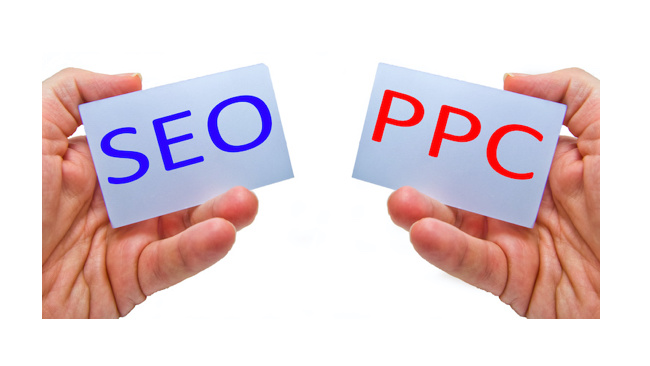These 4 Mistakes Will Destroy Your Conversion Rate
If you're a digital marketer, you've probably been there: excited about the new content you just released, even more excited when you see it's...
3 min read
![]() Guest Blogger
:
Jun 21, 2018 3:08:00 PM
Guest Blogger
:
Jun 21, 2018 3:08:00 PM

SEO and social media are effective ways to attract potential customers to your website, but once those visitors arrive, what do you want them to do? Calls-to-action, commonly shortened to CTAs, are the guideposts you provide to tell your visitors where to go and/or what to do next.
When done right, CTAs can increase conversion rates and bring your potential customer further into the sales funnel. According to a survey conducted by Brafton, well-placed CTAs can increase average order values by almost 50% and increase conversion rates by more than 20%.
Unfortunately, not all CTAs are done right. They are often too pushy or unclear. In some cases, they seem out of place, which is disconcerting to a website visitor.
So, how can you create clear, yet subtle calls-to-action that flow with the content and context of the website?
How many websites have you visited with CTAs that say things like "Learn More" or "Sign Up"? Those phrases might have worked a few years ago, but the general public has grown wary of phrases like this over time. They want a clear reason why it's in their best interest to click on that CTA. Tired or trite phrases will not increase your conversion rates.
Even worse is the phrase "Submit", give your readers and viewers a clear understanding of what their next step is and what they will receive in return. Try phrases like "Book a Consultation", "Save My Seat," or "Send My Discount Code."
One way to entice a visitor to click on your CTA is to emphasize the benefits he or she will receive as a result of that action.
Let's say you are offering a free course that can help your visitor perform a certain task in half the time.
The title of your course is "Do Certain Task in Half the Time." To link this benefit, make sure your CTA says something like "Start Your Free Course."
When people become curious, they want to learn more. Evoking curiosity starts with telling people what you want them to know, but not telling them everything. A brief answer. A hint of the full picture. Ask provocative questions that get people thinking.
If you are offering a download, show an image that gives viewers a glimpse of what they will receive without showing them exactly what your offer entails.
Language is a powerful thing. It can persuade people to perform certain actions they wouldn't otherwise take. Certain words are more persuasive than others. Some examples that are useful in CTAs include the following: you, free, instantly, and new.
People love when you talk with them directly, so "you" is a subtle way of connecting to people. They also crave things of value that cost nothing, so "free" is a natural choice.
Immediate gratification is a powerful enticement, so "instantly" grabs a person's attention. And most everyone loves to get in on the latest thing, so "new" makes them want to learn more.
One of the most effective types of content is one that addresses a specific problem the visitor may be experiencing.
A visitor to a dentist's website, for example, may be experiencing tooth pain and wants to learn what might be causing it.
Your title and text should identify the problem and answer the visitor's question. Then, in the CTA, offer a solution to the problem. "Want to get rid of that tooth pain? There is no need to continue suffering. Set an appointment today!"
Humans are naturally social. Most people want to belong to groups that have similar interests or needs. Getting an invitation to join such a group is a powerful, yet subtle enticement.
It can be something as direct as "Join more than 1,000,000 people who have...". It can also be more subtle.
"John Lawyer has helped thousands of clients reach satisfactory settlements over the past 20 years. If you want John's help with your case, call for your free case consultation."
People like direct, concise language. Your website visitors shouldn't have to guess what you want them to do. "Download", "Sign Up", and "Get Started" are good examples of strong, direct language.
Of course, it should be surrounded by context that clearly shows what the person is actually going to get. But, the CTA itself should use strong, concise language.
There are often many ways to say the same thing. When possible, choose the way that drives home the action you want that person to take. For example, "Call us" is more action-driven than "Give us a call."
These tips will help you create quality content that offers your reader a clear, yet subtle call-to-action.
Creating a clear, conversion-centric call-to-action doesn't have to be a long and tedious process. Spending a few minutes determining how to get the most mileage out of your words, you can help usher your viewers and readers through to the next steps in your buying process with ease.
About the Author: Caryl Anne Crowne is a contributing author and media specialist for Allegra Marketing. She regularly produces content for a variety of blogs that center around digital business solutions and ideas.

If you're a digital marketer, you've probably been there: excited about the new content you just released, even more excited when you see it's...

Many marketers and small business owners think that when it comes to lead generation an internal team is the only way—however, there are a myriad of...

Generating new, qualified leads is crucial for sustaining and growing revenue. In the constantly changing world of digital marketing, your website...